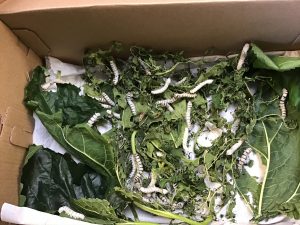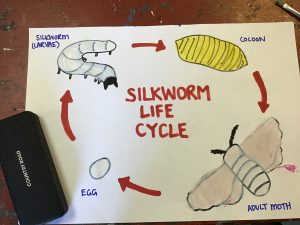Term 4 Week 4
We have some new OOSH pets! Claire has brought in some SILKWORMS for us to watch their cycle. They are amazing little creatures and the children have been quite fascinated watching them. They will continue to grow, then make a bright yellow silk cocoon, in which they will turn into a moth. When the moth emerges from the cocoon it will mate, lay eggs and die. The eggs we can then keep until next year when they will hatch and continue the cycle.
Silkworms are very hungry and will eat bags of mulberry leaves in their worm faze. If you have, or have access to a mulberry tree we would love it if you could bring some leaves in for our little friends.
Silkworms fun facts
Silkworms Only Eat Mulberry Leaves
Rich in vitamins and minerals, mulberry leaves have all the nutrients silkworms need. Silkworms, once hatched eat wildly, consuming about 50 times their weight in mulberry leaves.
Silk Is Incredibly Versatile
The silk that silkworms produce is one of the world’s strongest materials. Although thinner than human hair, it is lighter than cotton and stronger than steel when compared by weight.
Silkworms Lay Up To 300 Eggs
Female silk moths will lay up to 300 eggs at a time. She will shortly die after laying these eggs as adult silkworms have such small mouths, they cannot eat.



